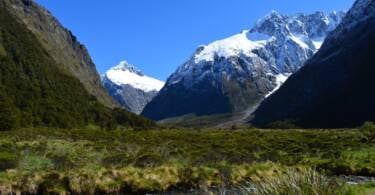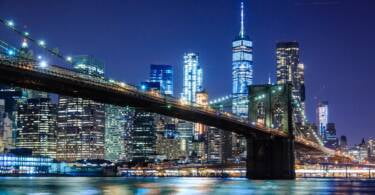Paris is pretty much synonymous with romance, and is considered the perfect destination for loved-up couples seeking an idyllic weekend break, with moonlight cruises along the Seine, panoramic view
Paris is pretty much synonymous with romance, and is considered the perfect destination for loved-up couples seeking an idyllic weekend break, with moonlight cruises along the Seine, panoramic views from the Eiffel Tower and candle-lit dinners on the Champs-Élysées, there’s no question of its allure.
But as with any city, there are many different faces to France’s capital, so forgetl’amour, forget the Louvre, forget the Arc de Triomphe and Notre Dame, and plan your next trip to ‘Alternative Paris.’
A lot more than most people think
Paris has twenty arrondissements, and with the most commonly-visited sites located in the first eight, it’s safe to say there’s a lot more to Paris than most people think, with the last twelve districts often not even getting a look-in.
The first district is located in the centre, near the left bank of the river, with the rest uncoiling clockwise, forming the structure of the city. As I say, the famous, picturesque areas are generally nearer the centre, but once you’ve finished posing for pictures in front of the Eiffel Tower it’s definitely worth a trip further, where you’ll find a whole new side of Paris waiting to be explored.
Place de la Bastille
Just a few stops along from the Louvre on Metro Line 1 is Place de la Bastille, the site of what used to be home to the infamous medieval fortress. Little remains of the prison itself, which was destroyed in 1789 (The Carnavalet Museum holds some artefacts and information for those interested), but the area around Bastille is worthy of a visit anyway.
Place des Vosges is just a short walk from the Bastille metro station and is Paris’ oldest public square, a pretty park encased by stunning 17th-century townhouses; the walkway around the park is made up of a series of arches, under which you’ll find a large choice of restaurants, cafes, shops and art galleries.
It’s a nice place to visit, if only for a meal under the arches or a drink in the park, although for something more cultural, Victor Hugo House is at number 6, Place des Vosges. The author of Les Misérables and The Hunchback of Notre-Dame occupied a flat in the square during the 19th century; now converted into a museum exhibiting various paintings, books and memorabilia related to Hugo and his work, entry is free and a must for any fan of Hugo’s stories.
Montmartre, home to many artists
Further still, in the North-West of Paris is the bohemian area of Montmatre, home to many artists in its time, the most famous of which include Monet, Picasso and Van Gogh. The whole area is on a slope, with plenty of unusual shops and cafes to discover as you meander up and down the quaint, cobbled streets. The hill is crowned by the stunning Basilique du Sacré-Cœur, which attracts hoards of visitors (it is, after all, an official tourist site), but it’s worth braving the crowds to see this beautiful white-domed church up close.
Besides, l’Espace Salvador Dali is nearby to guarantee some breathing space once you’ve made your way back down the hill. The gallery has around 300 original Dali pieces, as well as a separate exhibition for the work of contemporary artists; ideally located nearby is Place du Tertre, with an abundance of restaurants serving traditional French cuisine. It’s also a great place to experience the bohemian vibes that Montmatre is famous for, as the numerous bistros surround a square where local artists bring their easels for the day and paint landscapes, portraits and caricatures for the visitors.
Since you can’t really get much further North than Montmatre, the next stop for ‘alternative Paris’ takes you underground, 130 steps underground to be precise, to the Paris Catacombs. Underneath the streets of Montparnasse, in the 14th arrondissement, lies this ossuary that holds the bones of around 6 million people.
The Catacombs tour
During the 18th and 19th centuries, cemeteries in Paris were becoming over-crowded, actually posing health risks to the inhabitants nearby and so the skeletal remains of those already buried were moved nineteen metres underground, giving new purpose to the empty limestone quarries.
Be sure to arrive at least half an hour before the Catacombs open (10am) to ensure a speedier entry. Don’t be put off if there is a large queue when you arrive, it’s unavoidable since only two-hundred visitors are allowed in at any one time, with a rate of about ten – twenty people per fifteen minutes.
Of course, this does make for a more pleasant experience once inside as there are no crowds. In fact, we often found ourselves wandering the skull-adorned paths alone, which was admittedly slightly creepy at times. It’s only 14 degrees down in the tunnels, so make sure you dress suitably, and before you go in, I recommend getting an audio-guide for 3 euros, in order to make the most of your trip and learn the interesting historical stories about the Catacombs.
So, if you fancy a trip to Paris, but don’t fancy the exhausted stereotypes, with enough research you can hop across the channel and explore a completely different city to the one that you and so many others (myself included until recently!) thought existed.
What are your tips for an alternative view of Paris? Have your say in the comments section below, on Facebook or on Twitter.








